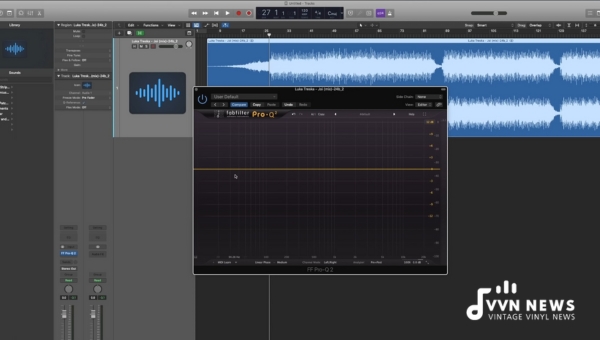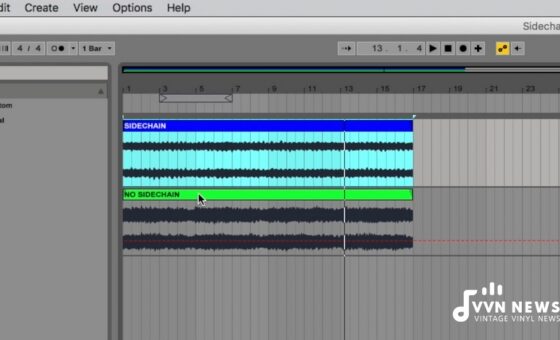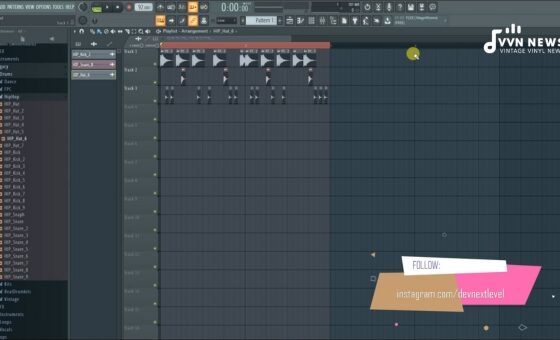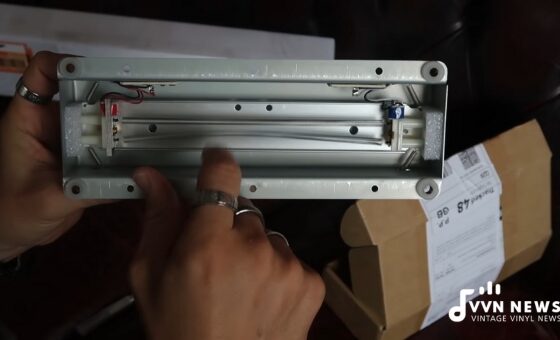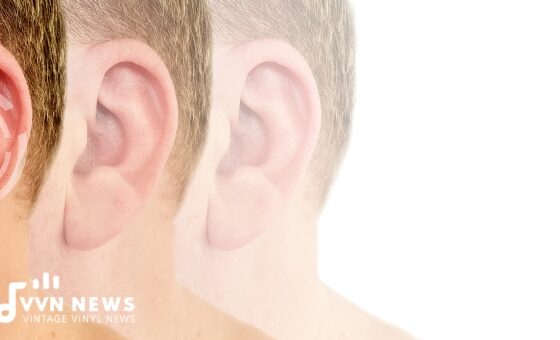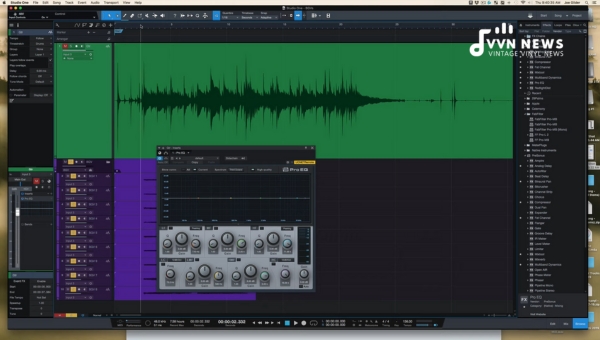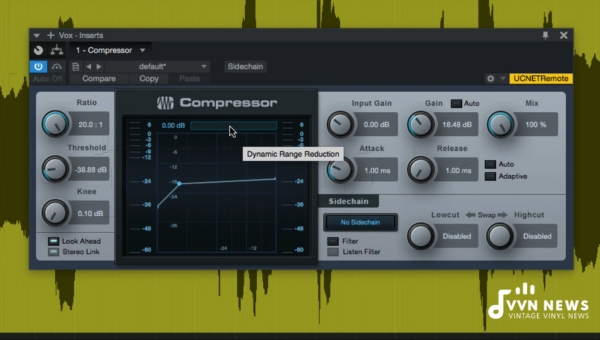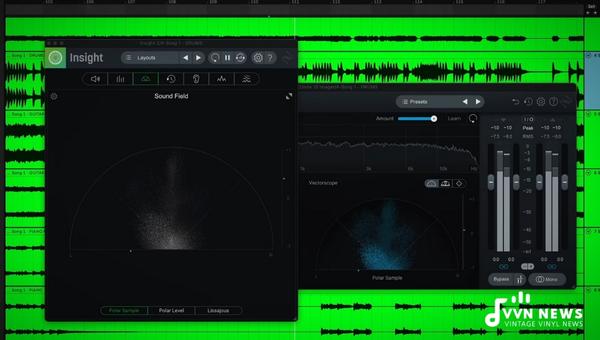As a dedicated audio professional, I often ponder a critical question – should I upgrade my mastering equalizer?
A primary tool in molding the character of my sound, this potent piece of gear can profoundly influence my final product.
With numerous new and improved models hitting the market lightning, it’s become increasingly hard to tell if an upgrade is a wise investment or an unnecessary expense.
A mastering equalizer that doesn’t cut it anymore can undermine your work quality and impede your creative flow.
Whether you’re in the music industry or podcast business, a subpar equalizer can be the difference between average and spectacular results.
Therefore, ensuring your gear is always up-to-date becomes crucial to delivering high-quality output regularly.
Considering whether to replace or upgrade your current equalizer model requires thorough contemplation.
The Importance of a Mastering Equalizer
At its core, a mastering equalizer is an essential tool that helps shape and color your sound in the final production phase.
It plays a vital role in adjusting frequencies for a balanced and harmonious output.
No matter the genre or style you work on, an efficient mastering equalizer ensures that the final mix translates well across various platforms and devices.
Refining Tracks to Perfection
The heart of a mastering equalizer lies in its ability to enhance specific characteristics of individual tracks or smoothen out tonal imbalances.
It can help amplify quieter sounds or reduce louder ones, achieving optimal loudness for each track without dynamic compromise.
Achieving Consistency Across Various Playback Systems
Mastering equalizers ensures your music sounds consistently good across diverse playback systems.
Your mix may sound fabulous on studio speakers but fall flat on ordinary headphones without proper mastering.
A good quality mastering equalizer helps maintain sonic consistency, whether played on car audio systems, mobile devices, or home stereos.
Flow and Cohesiveness
Your album or podcast series must flow as one cohesive body of work. Here’s where the nuances of the mastering equalizer truly shine through.
Taming harsh frequency peaks and troughs for individual tracks helps establish consistent tonal balance and cohesiveness across all channels.
Immersive Listening Experience
An efficient mastering equalizer brings depth and spatial dimension to your tracks, creating an immersive listening experience for your audience.
An efficient mastering equalizer offers you complete control over your final product’s quality and presentation by fine-tuning frequency content and overall tonal balance.
Also Read: Multiband Compression And EQ 2025 [How And When To Use?]
The Benefits of Upgrading Your Mastering Equalizer
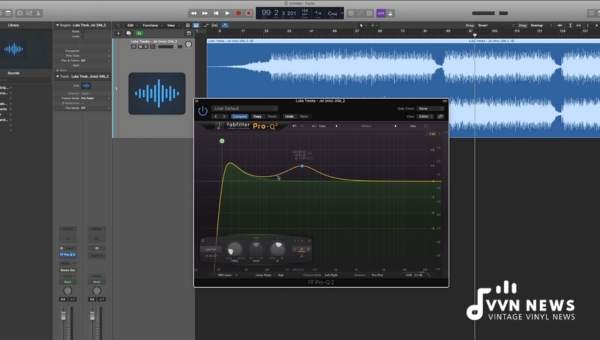
Upgrading your mastering equalizer could bring about a magnitude of benefits that enhance your workflow and significantly affect the quality of your outputs.
Some primary paybacks include improved audio quality, increased control and flexibility, and keeping up with evolving industry standards.
Improved Audio Quality
The foremost rationale behind upgrading is always the promise of improved quality.
The relentless technological progress has allowed us to fine-tune our artistry – our craft to subtle degrees unimaginable a few years ago.
Access to cutting-edge specs, superior operational algorithms, and enhanced circuitry designs translates into excellent audio quality.
The perceptible leap in precision allows you to manipulate even minute details while balancing frequencies or carving out soothing spaces amongst tones.
Enhanced Control and Flexibility
An upgraded mastering equalizer often comes with advanced features offering you enhanced control over sound shaping.
Whether it be fine-grained controls for frequency bands or added functionalities like room correction features, these upgrades often help make your sculpting process more efficient yet nuanced.
With increased flexibility, you can seamlessly switch between different working modes as per project requirements, giving you the artistic freedom to craft intricate aural masterpieces without technical limitations.
Additional tweaks like GUI improvements or low-latency processing might seem minor on paper but have substantial implications regarding workflow efficiency and comfort level during extensive working hours.
Keeping Up With Evolving Industry Standards
Another central perspective is that not upgrading can lead to an inadvertent rut. Choosing not to update your gear possibly means falling behind evolving industry trends or standards.
For instance, if most mastering suites are moving towards immersive 3D audio formats and their respective treatment methods, being stuck with outdated gear hinders your potential evolution as an artist and restricts you from delivering as per contemporary market expectations.
Moreover, professional competitiveness urges you to be up-to-date with current technology, thwarting the possibility of your work quality overshadowing advancements in audio processing technology.
There’s always a leap of faith involved when deciding on an upgrade. Whether the enhancements in the newer model validate the additional investment is subjective.
However, the consensus prevails – high-quality mastering equals magnificent sonic output.
Upgrading your old mastering equalizer might be the refinements that hoodwink your final product from ordinary to extraordinary.
Also Read: Can We Mix Bass In Stereo? 2025 [Mixing The Kick Drum & Bass]
Should I Upgrade My Mastering Equalizer?
As an auditory architect constantly striving to perfect my craft, I’ve faced this pressing question: Should I upgrade my mastering equalizer?
It’s not an easy question to answer and warrants a careful examination of various factors.
To begin with, improved audio quality is the most persuasive reason to consider upgrading your mastering equalizer.
An upgrade can bring sharper clarity, less noise and distortion, and increased precision for frequency adjustments.
Secondly, you should think about increased operational control. The state-of-the-art tools offer features that might be absent from older models, like spectral balancing or mid-side processing, which contribute to a more nuanced sound sculpting.
Another point worth noting is the progression in industry standards and trends.
If you’re keen on delivering industry-grade work and remaining relevant, staying up-to-date with the latest technologies is pivotal.
Factors to Consider
The decision to upgrade should not be made hastily – several considerations come into play before taking the plunge.
- Budget: Upgrading your gear will certainly require budgetary planning. As such, comparing prices across various brands before purchasing is necessary.
- Compatibility: Check if the new unit can smoothly integrate with your current setup without significant changes.
- Ease of Usage: Evaluate if you’ll have an easy time navigating through its functions or if there will be a steep learning curve.
Researching Options for Upgrade
Once you decide upon upgrading your mastering equalizer, where do you start? Several reputable companies offer advanced features tailored towards modern production needs.
Start by conducting comprehensive research on both offline and online tech stores for trustworthy brands renowned for their audio integrity, like Waves, FabFilter, and Dangerous Music.
Read through the specs of each model, understand the advantages they offer, and check if they align with your audio requirements.
Customer testimonials, product reviews, and buyer’s guides can also come in handy.
Preparation for Upgrading
Once you’ve selected the suitable model that ticks all of your requirement boxes,
- Ensure a smooth transition by carefully setting up your new mastering equalizer.
- Willingly invest time in fully understanding its operation to leverage all its benefits.
- Refine settings for optimal performance according to your production needs.
Answering the question “Should I upgrade my mastering equalizer?” relies heavily on individual factors – your current model’s capabilities versus what new models offer, budgetary constraints, personal preferences, etc.
However, should you choose to upgrade, remember that an excellent mastering equalizer can drastically impact the quality of your work output for the better.
Also Read: 25 Mixing Eq Tips To Sculpt The Perfect Sounding Song
Factors to Consider Before Upgrading Your Mastering Equalizer
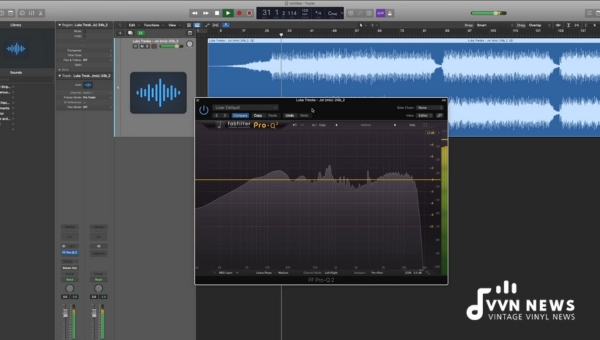
Before biting the bullet and upgrading your mastering equalizer, take some time to assess various aspects surrounding this critical decision. Here are the key factors to mull over:
Budgetary Considerations
One cannot deny that pricing is integral to any purchasing decision. Establishing a realistic budget based on your needs and spending capacity is essential.
- Affordable vs. High-end: Mastering EQs runs from inexpensive models to high-end devices with premium price tags. While it’s tempting to buy the most expensive model, hoping for better results, a high price doesn’t always guarantee exceptional quality. Sometimes, less costly models can provide excellent functionality suiting your requirements.
- Cost-effectiveness: Look for devices that balance cost and features well. Clarity about what you need in your EQ will prevent you from paying for extra features.
- Return on Investment: The projected lifespan and durability of the device are also necessary. Evaluate whether the upfront cost will yield a sound return on investment over time.
Compatibility with Existing Equipment and Software
An upgrade isn’t beneficial if it can’t smoothly integrate with your current hardware and software setup.
- Hardware Compatibility: Ensure that connectivity options align with your existing equipment’s inputs/outputs protocols (analog or digital)
- Software Compatibility: The new equalizer should be compatible with your DAW (Digital Audio Workstation). Check whether it can support plugins or third-party software if required.
User-Friendliness and Ease of Operation
A user-friendly interface can significantly ease up mastering processes while boosting productivity:
- Navigability: Look for an intuitive design layout allowing quick access to commonly used controls/functions.
- Learning Curve: It shouldn’t take ages to master your new equalizer! A steep learning curve could impede work and hamper productivity.
- Support & Resources: Check whether the manufacturer offers tutorials, manuals, or other educational resources to help you get the most out of your new equipment.
Ultimately, upgrading your mastering equalizer is a significant step. Hence, careful consideration of these factors can go a long way in choosing an upgraded EQ that syncs well with your needs and operational dynamics.
Evaluating Different Options for Upgrading Your Mastering Equalizer
The quest to upgrade your mastering equalizer is understandably daunting, with numerous brands and models vying for your attention.
However, with the right strategy and thorough research, you can make an informed decision that enhances your sonic output significantly.
Researching Reputable Brands and Models
Navigating the expansive landscape of audio gear can be tricky. It’s crucial first to identify reputable brands known for their quality and durability in periodic innovativeness in the audio industry.
Professionals often revere brands such as Manley, Dangerous Music, or GML for their mastering equalizers.
Once you pinpoint notable brands, dive deeper into their product range. Understand unique features, functionalities, and key differences among various models and how they cater to sound engineering needs.
Reading Reviews and Testimonials from Industry Professionals
Exploring objective reviews and firsthand user experiences significantly simplifies your decision-making process.
Websites like Sound on Sound or Mix Online are noteworthy platforms that host detailed reviews of various popular master equalizers.
User testimonials often highlight product quirks that may not be evident during a demo or initially overlook technical specifications.
Look for comprehensive reviews that cover usage experiences in different setups and scenarios – it gives you a fair idea about its performance in real-life environments instead of strictly controlled conditions. Offer insights into future-proof innovations worth investing in.
Consulting with Fellow Audio Engineers or Experts in the Field
Each person has distinct preferences regarding shaping sound—what works well for one may not deliver the same results for others.
Therefore, discussing your specific needs with fellow audio engineers or experts in the field can provide valuable perspectives.
They can share their experiences with various equipment, recommend models that suit their workflow, or warn you against models that promised more than they delivered.
Connecting with professional circles on social networking sites like LinkedIn or dedicated forums like Gearslutz opens avenues for seeking personalized advice.
You could also participate in webinars, workshops, or trade shows that assemble a community of audio professionals under one roof.
Upgrading your mastering equalizer is a potentially rewarding investment into your sound engineering arsenal.
It calls for meticulous research and assessment but yields substantial control and flexibility toward perfecting your final mix.
Opt for an upgrade when you believe it genuinely benefits your work rather than flowing with industry trends blindly.
Consider other crucial factors like budgetary constraints, compatibility issues, and ease of operation while making this significant decision since the ultimate objective remains to enhance sound output without compromising financial viability or workflow efficiency.
Also Read: How To Eq Vocals Professionally In 2025 [Step by Step Guide]
Steps to Successfully Upgrade Your Mastering Equalizer
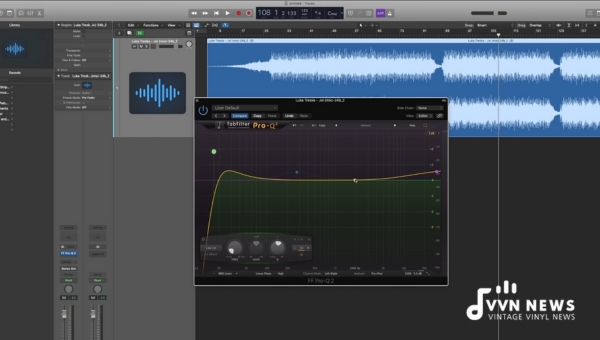
Upgrading your mastering equalizer involves more than just swapping out your old gear for a new one.
It’s about keeping your workflow smooth and consistent while adopting new ways to enhance your audio work. Let’s break down the process into five major steps:
Step 1: Establish your Needs & Goals
Before making any leap, take some time to outline what you’re not getting from your current gear. Are you hunting for more refined control? Trying to keep up with industry trends? Your goals should dictate the type of equalizer that most suits your needs.
Step 2: Set a Budget
Upgrading is an investment. It pays off in increased productivity and improved sound quality but comes with a price tag. Set yourself a budget range that feels comfortable and stick to it.
Step 3: Research
Once you have set clear-cut goals and budgets, start exploring what options out there align with them. Factor in everything from brand reputation, technical specifications, and connectivity options to device compatibility.
Visit online forums like Gearslutz or audio blog Sound On Sound for trusted advice.
Remember, the most expensive option is not always the best one for your specific needs. Weigh in different perspectives before making up your mind.
Step 4: Consult Professionals
Talk with fellow audio professionals about their favorite tools and experiences using different models. They can share invaluable insights into how certain gear performs under actual working conditions.
Moreover, reach out to a technical expert or sales representative who understands these devices well. Having detailed conversations can clarify any doubts and give you greater confidence in making informed decisions.
Step 5: Purchase & Training
Go ahead and buy when you’re confident about which model hits the right balance between performance and price. Once you have the new equalizer in your hands, spend considerable time learning its ins and outs. Remember, a mastering equalizer can only shine when fully understood and efficiently operated.
About Post-purchase Maintenance
Even after buying a new equalizer, it’s essential to maintain it well for optimal performance. Regular cleaning, software updates, and periodic servicing can help ensure that your new gear delivers the quality sound you invested in over a long period.
FAQs About Mastering Equalizer
What’s the role of a mastering equalizer?
A mastering equalizer helps refine the sound quality in the final production stage, ensuring sonic balance and consistency across diverse playback systems.
What factors should I keep in mind when deciding to upgrade my mastering equalizer?
Consider your budget, compatibility with existing equipment, user-friendliness, brand reputation, and user reviews before upgrading your mastering equalizer.
Does a better-quality mastering equalizer guarantee better sound?
Yes, a high-quality mastering equalizer can significantly improve sound output by offering finer control over tonal balances and frequency adjustments.
Why is it essential for my tracks to be consistent across various platforms?
Tracks must stay consistent across different platforms to ensure a pleasant listening experience regardless of the device used for playback.
Should I consult with fellow audio professionals before upgrading my gear?
It can certainly help. Reaching out to knowledgeable folks can give you valuable insights about your potential upgrade options.
Conclusion
After dissecting the multitude of angles surrounding the upgrade decision, it boils down to this – if your mastering equalizer heavily restricts you, or lacks critical features that could significantly improve your work, then an upgrade could be beneficial.
However, you should carefully research various models, consult with professionals, and consider budget factors before leaping.
An upgraded mastering equalizer can create enormous strides in sound quality and control, giving you the leading edge in your audio endeavors.
